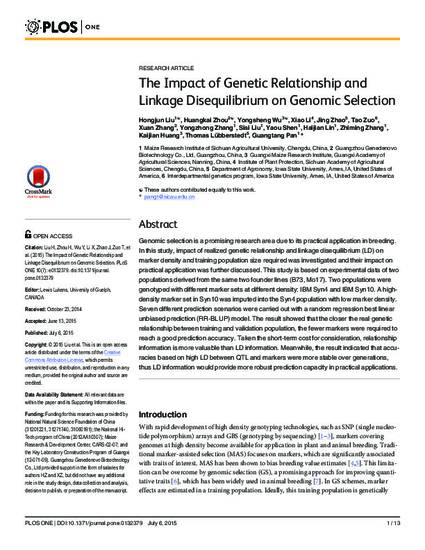
Genomic selection is a promising research area due to its practical application in breeding. In this study, impact of realized genetic relationship and linkage disequilibrium (LD) on marker density and training population size required was investigated and their impact on practical application was further discussed. This study is based on experimental data of two populations derived from the same two founder lines (B73, Mo17). Two populations were genotyped with different marker sets at different density: IBM Syn4 and IBM Syn10. A high-density marker set in Syn10 was imputed into the Syn4 population with low marker density. Seven different prediction scenarios were carried out with a random regression best linear unbiased prediction (RR-BLUP) model. The result showed that the closer the real genetic relationship between training and validation population, the fewer markers were required to reach a good prediction accuracy. Taken the short-term cost for consideration, relationship information is more valuable than LD information. Meanwhile, the result indicated that accuracies based on high LD between QTL and markers were more stable over generations, thus LD information would provide more robust prediction capacity in practical applications.
Available at: http://works.bepress.com/thomas-lubberstedt/29/

This article is published as Liu, Hongjun, Huangkai Zhou, Yongsheng Wu, Xiao Li, Jing Zhao, Tao Zuo, Xuan Zhang et al. "The impact of genetic relationship and linkage disequilibrium on genomic selection." PloS one 10, no. 7 (2015): e0132379. doi: 10.1371/journal.pone.0132379. Posted with permission.